A professional often thinks in the existing structures from practice, in defined tasks and ditto responsibilities. Students think beyond. It is one of the reasons that students and professionals have been linked to each other during a parallel running professional design study and master studio, called ‘The City of the Future’.
Continue reading
Tag Archives: people
Graduation Ceremony MADE
The first lucky 7 students have graduated from the MSc MADE (Metropolitan Analysis, Design and Engineering) programme! They received their well-earned MSc diploma during a festive graduation ceremony at AMS Institute. Two years ago, they joined AMS Institute together with elven others for classes on metropolitan challenges, entrepreneurial skills, and data analysis in the urban context. Now they have developed to be the first generation of interdisciplinary metropolitan innovators.

On September 24th, we have celebrated this milestone together with their family and friends when receiving their joint degree diplomas from Delft University of Technology and Wageningen University & Research. This is extra special as these are the first engineering degrees that are handed out in the city of Amsterdam in over 450 years! It has been quite an adventure to write this progrogramme from 2016 until its successful accreditation, and, subsequently, I am happy to have been the first director of this programme. Continue reading
Smart Urban Mobility

Why is smart mobility essential in urban development?
Like many metropolitan areas, the Amsterdam metropolis is prospering, the city is growing, new homes are being built, new companies and talent continue to relocate here, and the city is becoming increasingly popular with tourists. If residents, visitors, commuters, and others continue to travel as they do today, all forms of transport combined will grow in the coming years between 20% and 40%, and traffic will grind to a halt.
Good accessibility – with smart connections within the city and with the rest of the country and world – makes an important contribution to Amsterdam’s attractiveness for all travelers. Moreover, particularly in Amsterdam, social diversity and inclusivity are valued, which means providing everyone with equal access to good liveability and transport.
Mobility operates as the intersection between the city’s infrastructure and its city’s inhabitants. It is the central link in the well-functioning of a city and a key element in the organization of multimodal transport. In doing so, it is not only about the connection to other areas, but also about sowing together the fabric of the area and the movement of people in the area itself.
Continue reading
Mobility and Urban Development
Participants of the 2019 summer school will explore interdisciplinary approaches towards a sustainable integration of designing disciplines for smart urban mobility and the new urban development area Haven-Stad in Amsterdam. They will deal with the following themes: the role and function of smart urban mobility, including mobility as a service (MaaS) and emerging mobility options; travel behaviour of a growing number of users; sustainability challenges and fairness in transport planning; public and semi-public spaces (and social dynamics therein); exploration of alternative, marginal and emerging social uses of urban developments as meeting places and culture; urban integration in the overall mobility system; the interface between architecture and infrastructure with the urban fabric; programming of future transport nodes and the accessibility to and from such transport hubs of all types of smart mobilities (e.g. conventional public transport, shared mobility, autonomous taxis, etc.).
Stations as Nodes
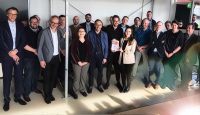 .
. 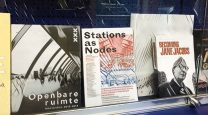
Official book launch Stations as Nodes
See also: Metropolitan Stations and Integrated Mobility Challenges
Metropolitan Stations
Places for Change and Innovation
A train station has always been a space for many and it is about time to be approached and designed as such. The urgency is there. Stations have become an intermodal hub with a large crowd being present. From a human perspective, it makes sense: Stations are part of the larger network of public spaces, indoors – outdoors, and interlink other hybrid places and buildings. The more people flock to the city, the more move and stay at stations and/or elsewhere close-by. The role of stations in the network strengthens. More and different people are present. As such, from the observation that the whole is more than the sum of fixed demarcated elements, ever-changing human hubs are perfect settings for place-based innovation in design and by design, because where people move, society changes, and where strangers meet change takes place.

Read the article: Metropolitan Stations, Places for Change and Innovation (2018) by Maurice Harteveld (c)
See also: Station as Nodes and Integrated Mobility Challenges
Pasáži Renesance
Prague has more arcades than Paris. Still, they are less known. This is unfortunate, because these arcades underlining the identity of Prague and the Czech Republic. This is underpinned particularly during the 1990s arcade renaissance. New arcades have been designed, like Pasáž Jiřího Grossmanna (1995 –1996), Rathova Pasáž (1996), and the redesign Hrzanska Pasáž of 1702-1704 (1996). These projects have upgraded existing arcade systems, introduced new styles, but foremost new hopes… It echoed an update on the Czech Awareness.
Throughout history we have seen this happen in the design of arcades in Prague. This particular study brings us back to the rise of Bohemian identity and unfolds an epistle illuminating an alternative arcade project. As such, the study reframes relations between design of public space and society and provides a way to understand shifts in these.
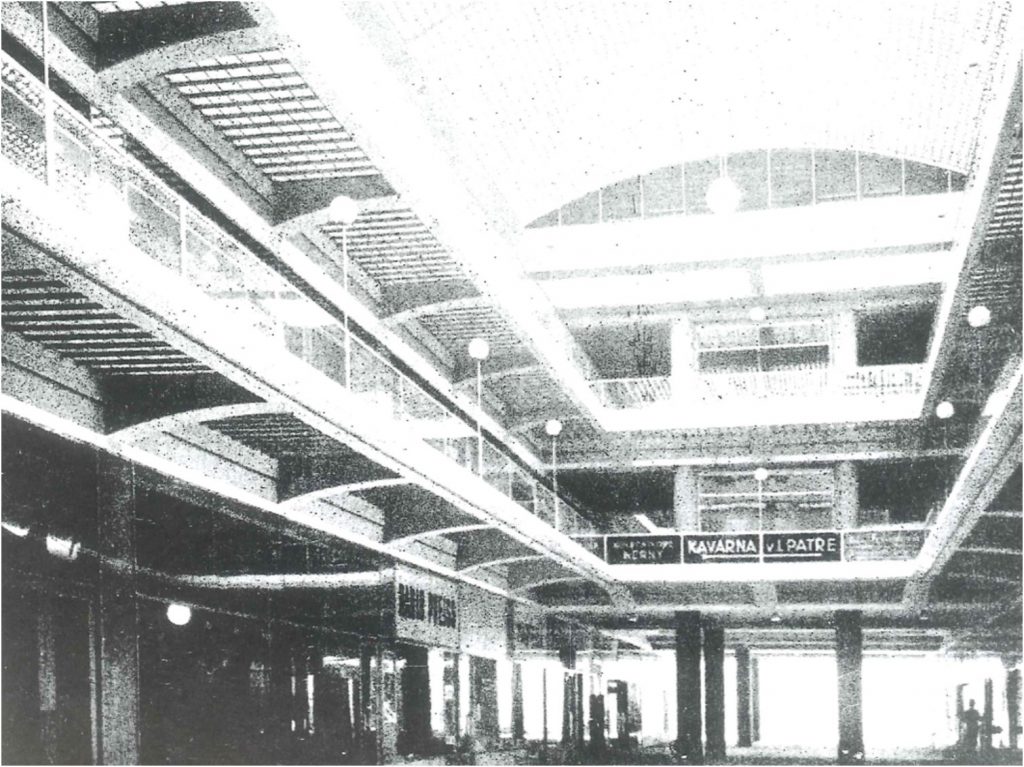
Pasáže Černé Růže (1936), by Oldřicha Tyla
Pražské Pasáže
Arcade Projects in Prague
Public Buildings | Urban Architectural Design | Contextual Assignment
as projects for people, and projects within Society
Re-Learning Public Space
An Action Research Event
When: 28th – 30th June, 2018
Where: AMS Institute, Mauritskade 62, 1092 AD Amsterdam
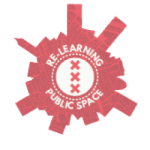
Urban researchers, planners, communication experts, geographers, architects, as well as active citizens, policy makers trace the stories behind contemporary appropriations of public space. They identify related dilemmas and formulate research questions by liaison with locals, designing an alternative city guide inspired by a set of broad, yet timely themes: The ludic team focusses on the affordance of creative reuse an play in the city, grounded in co-creating public space. The circularity team focusses on self-sufficiency in the city, as manifested by places of gathering and sharing and tangible in productive urban landscapes. The informal team focusses on emerging inequalities and politicisation/de-politicisation, as a result of global commons and local governances of urban places. The wild life team shifts focus to the place of animals in our city. The mass tourism team shines the light on the effect of visitors, travelers, and short-stay residents on the public sphere.
Continue reading
Conversations in the Anthropocene

Introducing the Anthropocene
Colin Waters is Secretary of the Anthropocene Working Group of the Subcommission on Quaternary Stratigraphy, the body investigating the Anthropocene as a potential geological time unit. His working group is putting forward a proposal towards the recognition of the proposed new epoch. They started in 2009 and up until last year, they were pulling together all information that was available. “For example the biological changes that have happened are irreversible. Once species are transferred across the planet, you can’t put them in a box and put them back in their indigenous state”, he has explained while being our guest in Delft: “Even things like carbon dioxide, this will last as a signal for thousands of years. Even if we are reducing our carbon emission immediately, we are still looking at emissions which are going to be elevated above natural levels for thousands of years. At the present, there is no indication that we are changing that trend.” The human impact may be like a meteorite impact. At the end of the Cretaceous Period when the dinosaurs became extinct, a spike of iridium (an extra-terrestrial element) changed the conditions on Earth. “You still find a layer of a few millimeters thick which is high in iridium, and we can use that as the basis of the start of the new Paleogene Period following the Cretaceous.” It has been “a state change, a game-changer, to a state which now is very different from what it was before and is not recreatable to a large extent either.” What is our share, as designers?
Architecture is perhaps one that we have not mined sufficiently in the past that can provide information that is new to us and help build the story that we are developing. – Colin Waters
Moving and Meeting in the Boston Metro
In a flying visit to Greater Boston, particular urban design themes related to the city of the future have become manifest once again. On the one hand, thoughts on infrastructure and public space need to be interrelated. People move in various ways, yet the faster they move (most likely by individual or collective transport), the less exchange between them will happen. Although highways and rail tracks increase accessibility and connectivity, and are of extreme importance for the metropolis, it is known that these bundles may cause barriers for those present locally, on both sides to meet and greet. The impact of the Central Artery tunnel project and Rose F. Kennedy greenway on the Boston downtown waterfront is a classic example in showing the importance of designing public places and creating walkable space in a dense urban development. Pedestrian spaces, preferably supported with undergoing public transit or smart hubs alike, is only not less space consuming, but also serves the gathering of people in a better way, hence it serves coincidental exchanges between them. The images of a ‘before’ and ‘after’ the dramatic transformation are a clear witness of this. The same is true in the recently developed business improvement districts. In a opposite way the surplus of fast lane infrastructure generated a lack of public place thus human exchange. The transit hubs of the North and South Station areas may be multi-layered centrality hubs which easily could follow the same strategy, yet here little of this is visible here. Current transformation may be just a first step in improving the stations’ premises. With their high potential in the public spheres, they will be definitively the next challenging urban transformation areas in need to be directed by the City. On the other hand, the City as the public government is not alone in this. Other non-gov stakeholders and pro-active citizens join in the urban development too. Historic Washington and Summer Street areas show what can be the impact collaborative improvements and community development. In fact every citizen has impact simply by being present in the city. People are the prime actors in the urban networks and physical systems. They make the urban space public. It is omnipresent when one would simply walk from School-Franklin, Bedford West, and Park Plaza to City Hall, and trace whatever they do and sense in the city. It adds another perspective to future intervention areas.
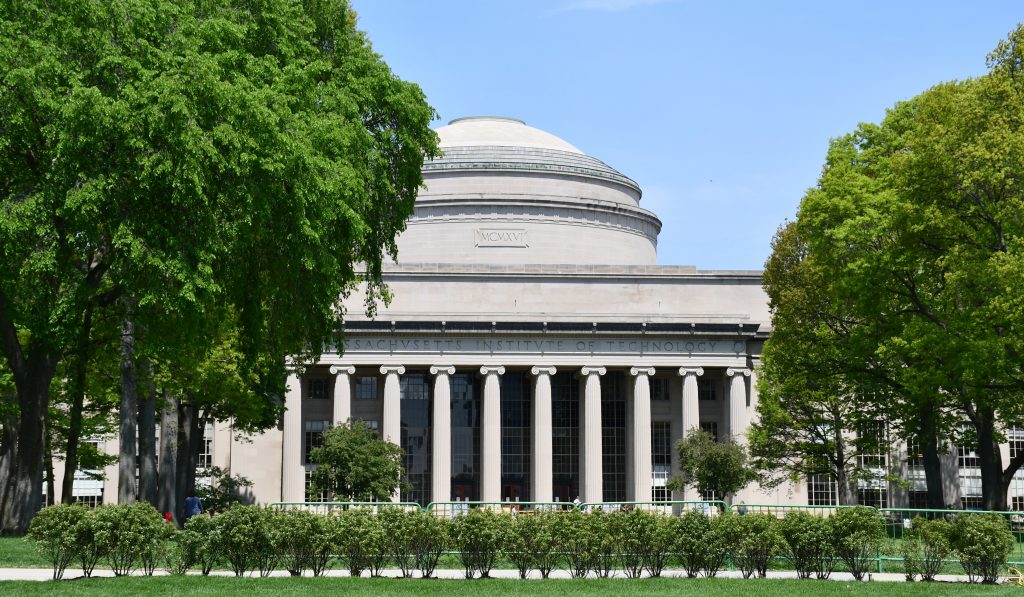
Boston, 15-17 May 2018
Massachusetts Institute of Technology (MIT)
Boston Planning & Development Agency (BPDA)
Harvard Graduate School of Design (GSD)
